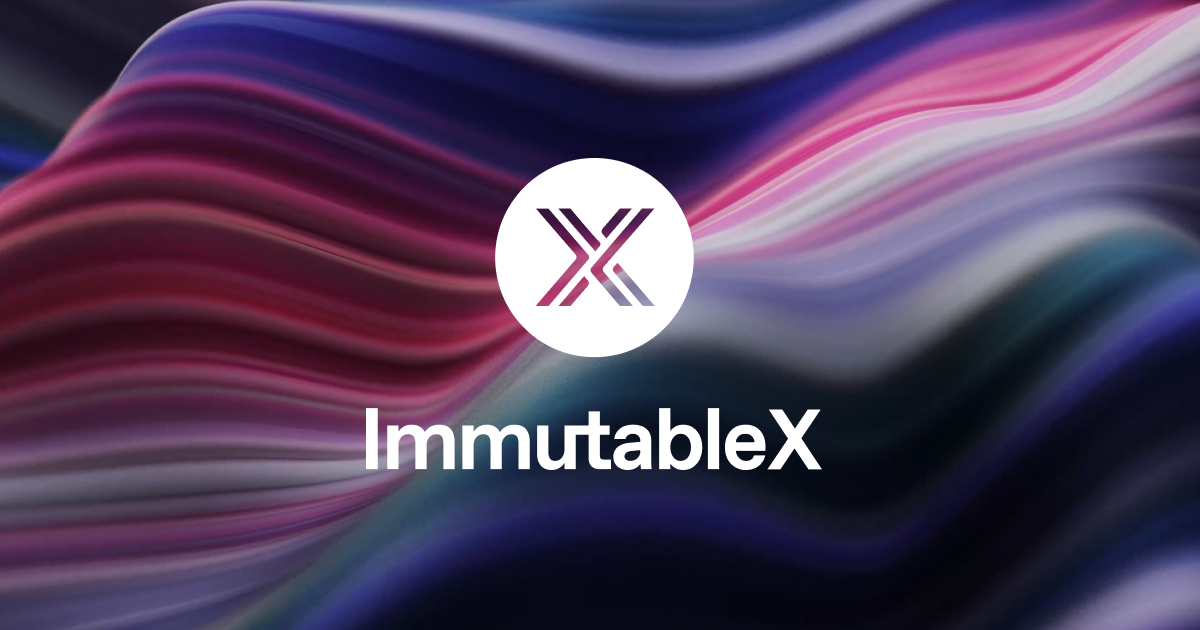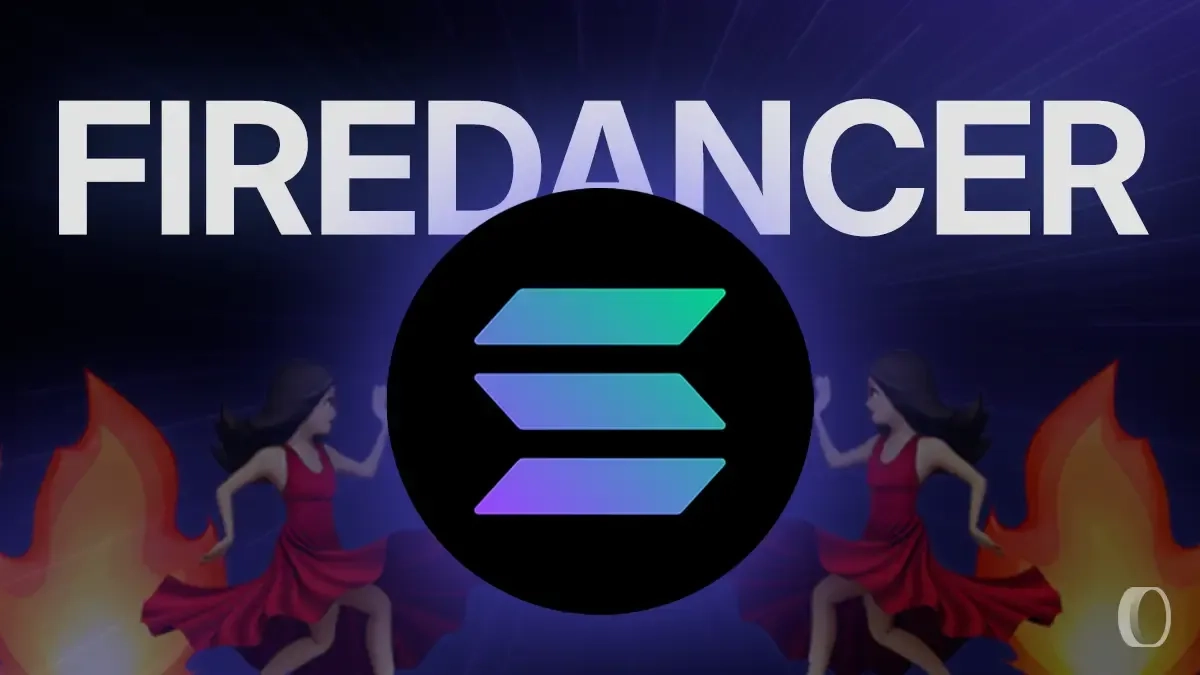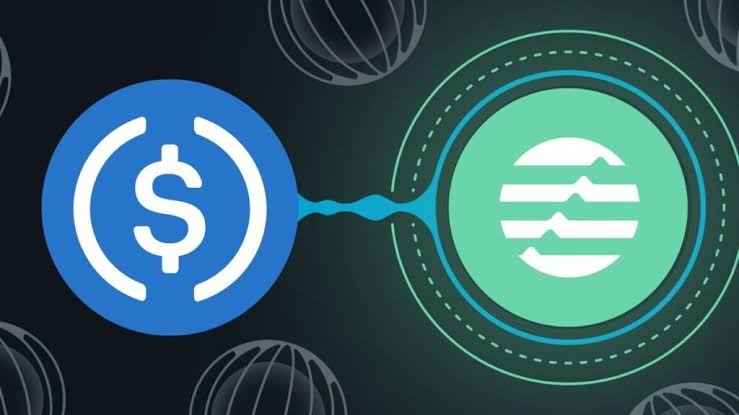When it comes to scaling blockchain networks, Zero-Knowledge Rollups (ZK-Rollups) are revolutionizing the space—enter StarkNet and zkSync, two of the most talked-about solutions in this arena
As blockchain networks strive to accommodate increasing demand, scalability becomes a critical challenge. Zero-Knowledge Rollups address this by enabling higher transaction throughput while significantly reducing gas fees, which is essential for the future growth of decentralized applications (dApps).
In this article, we will analyze and compare the efficiency of StarkNet and zkSync, two of the most promising Zero-Knowledge Rollup projects, in terms of performance, scalability, and their potential impact on the blockchain ecosystem.
Understanding Zero-Knowledge Rollups (ZK-Rollups)
Definition of Zero-Knowledge Rollups
Zero-Knowledge Rollups are a class of Layer 2 solutions designed to significantly enhance the scalability of blockchain networks, particularly Ethereum.
By processing transactions off-chain while storing only essential data on-chain, ZK-Rollups provide a way to reduce congestion on the main Ethereum network.
This enables faster transaction speeds and lower gas fees without compromising security or decentralization.
Essentially, ZK-Rollups bundle multiple transactions into a single batch, which is then submitted to the Ethereum mainnet for finality, ensuring that the integrity of the network is maintained.
How ZK-Rollups Work
The core technology behind Zero-Knowledge Rollups is the use of zero-knowledge proofs (ZK-proofs), a cryptographic method that allows data verification without exposing the actual data.
Specifically, a ZK-Rollup generates a succinct proof that verifies the correctness of all transactions within a batch. This proof is then sent to the Ethereum mainnet, where it is validated.
As a result, the actual transaction data does not need to be processed on-chain, reducing the computational load and significantly lowering gas costs. This mechanism ensures both privacy and security while improving efficiency.
Importance of ZK-Rollups in Blockchain Efficiency
The role of Zero-Knowledge Rollups in blockchain scalability cannot be overstated. They directly address Ethereum’s key challenges: high gas fees, slow transaction speeds, and low throughput.
By offloading the majority of transaction processing off-chain, ZK-Rollups enable Ethereum to handle a greater volume of transactions, while keeping fees low and processing times fast.
This is particularly crucial as Ethereum continues to be the leading platform for decentralized applications (dApps), where high demand can often overwhelm the network.
Introduction to StarkNet
Overview of StarkNet
Designed to scale Ethereum using its superior cryptographic protocol called STARK (Scalable Transparent Argument of Knowledge), StarkNet is one of the main Zero-Knowledge Rollups created by StarkWare.

Operating as a Layer 2 solution, StarkNet ensures great scalability without compromising security by processing transactions off-chain and forwarding just proofs to the Ethereum mainnet.
Using the strong security assurances offered by STARK proofs, the protocol lets Ethereum greatly boost its transaction volume while lowering costs.
Using this technology, StarkNet offers a scalable, effective substitute for conventional Layer 1 networks.
Key Features of StarkNet
- Scalability: Data compression methods and transaction batching help StarkNet to reach scalability. StarkNet clusters several transactions into a single batch rather than handling every one on the Ethereum mainnet.
After that, this batch is confirmed using a STARK proof, therefore reducing the data flow to Ethereum and enabling more effective block space use.
By lowering gas costs and accelerating transaction processing, this strategy enables StarkNet to manage a far higher volume of transactions than Layer 1 Ethereum allows.StarkNet’s
- Security: security is based on STARK proofs, a sophisticated kind of cryptographic validation.
Without disclosing any private information, STARK proofs ensure the integrity and legitimacy of the off-chain transactions handled.
Since anybody on the Ethereum blockchain can verify the proofs, this guarantees that the system stays transparent while also being safe against hostile players.
StarkNet is among the most secure Zero-Knowledge Rollups available given STARK’s openness and scalability.
- Decentralization: Operating on a distributed network of validators in charge of providing proofs to the Ethereum mainnet, StarkNet is
This distributed method guarantees that no one entity owns the network, therefore complementing Ethereum’s more general aim of preserving decentralization.
Working to validate batches of transactions, validators in the StarkNet ecosystem add to the general dependability and security of the system. StarkNet’s strong, censorship-resistant network is preserved in part by this distributed validation system.
Introduction to zkSync
Overview of zkSync
Another well-known Zero-Knowledge Roll-up solution meant to improve Ethereum’s scalability is zkSync, created by Matter Labs.
Like StarkNet, zkSync uses ZK-Rollups off-chain to handle transactions while guaranteeing on-chain security and data integrity.
Among the most exciting initiatives in the Ethereum Layer 2 ecosystem, the platform presents a scalable and quick substitute for Ethereum’s fundamental layer.
Maintaining Ethereum’s distributed character, zkSync increases transaction throughput, lowers gas fees, and provides quick transaction finality by using innovative cryptographic techniques.
Key Features of zkSync
Optimized for User Experience
With an eye toward a flawless user experience, zkSync gives minimal prices and speedy finality first priority. By greatly lowering transaction costs and wait times, the platform seeks to make distributed apps (dApps) more accessible to consumers.
The architecture of zkSync enables quick processing of transactions with almost instantaneous Ethereum mainnet confirmation. One of the main reasons zkSync is a preferred choice for developers and consumers searching for a more scalable Ethereum solution is this optimization for user experience.
ZK-SNARKs Technology
Using zk-SNARKs (Zero-Knowledge Succinct Non-Interactive Arguments of Knowledge), a type of cryptographic proof enabling transaction validation without disclosing any private information, zkSync
This helps zkSync to effectively handle transactions by grouping them into compact proofs turned in to Ethereum for validation.
By greatly lowering computational overhead, zk-SNARKs enable faster transaction speeds and reduced gas prices. The core of zkSync’s capacity to provide security while preserving privacy is this technology, which also offers scalability.
EVM Compatibility
ZkSync stands out mostly for its complete Ethereum Virtual Machine (EVM) compatibility. Because of this compatibility, developers may port current Ethereum dApps to zkSync with little codebase modification needed.
ZkSync is EVM-compatible, thus developers may use the same programming languages (like Solidity) and tools applied on Ethereum, so offering a seamless and familiar integration process.

This capability helps zkSync to act as a link between the rising demand for distributed apps and Ethereum’s high gas fees.
StarkNet vs. zkSync: A Comparative Efficiency Analysis
Throughput and Scalability
When comparing the scalability of Zero-Knowledge Rollups, both StarkNet and zkSync offer distinct approaches to handling Ethereum’s transaction bottleneck.
StarkNet leverages a batch processing mechanism that allows it to handle many transactions at once. By grouping transactions into batches and utilizing STARK proofs for verification, StarkNet can scale effectively without overwhelming the network.
This method allows for massive throughput, as the system processes multiple transactions off-chain and submits only the aggregated proofs to Ethereum.
On the other hand, zkSync’s scalability relies on zk-SNARKs (Zero-Knowledge Succinct Non-Interactive Arguments of Knowledge).
This cryptographic approach allows zkSync to process transactions more efficiently by reducing computational overhead. zkSync’s solution can handle a high volume of transactions with fast finality, offering both scalability and speed while keeping costs low.
Although the two approaches differ in their underlying technologies, both StarkNet and zkSync ensure that Zero-Knowledge Rollups substantially improve Ethereum’s scalability.
Transaction Costs
StarkNet’s transaction costs are minimized through its batch processing mechanism. By grouping multiple transactions together and using STARK proofs, the system reduces the need for individual transaction validations, resulting in lower gas fees.
This helps to keep costs manageable, even during periods of high network congestion. StarkNet’s ability to aggregate transactions and submit proof as a single operation significantly reduces the computational burden on the Ethereum mainnet, translating to lower fees for users.
zkSync’s cost efficiency is similarly impressive, with a strong focus on low fees to make Ethereum more accessible to users.
The use of zk-SNARKs enables zkSync to compress transactions into smaller, more efficient proofs that are cheaper to process. zkSync’s transaction model is highly cost-effective, ensuring that users benefit from reduced gas fees while maintaining the security and integrity of Ethereum’s Layer 1.
While both platforms strive to minimize transaction costs, zkSync’s zk-SNARKs technology delivers a particularly strong advantage in cost efficiency.
Security
StarkNet’s security model is built around STARK proofs, which provide strong cryptographic guarantees for transaction validity. By using STARKs, StarkNet can scale without compromising security, as the proofs offer transparency and verifiability while keeping sensitive data private.
This approach ensures that transactions processed off-chain remain secure and that only valid batches are confirmed by the Ethereum mainnet, protecting users and assets from fraud or malicious activities.
Similarly, zkSync employs zk-SNARKs to ensure transaction security while minimizing computation overhead. zk-SNARKs allow for the verification of transactions without revealing any underlying data, which not only secures the transaction but also reduces the amount of computational power needed.
This makes zkSync’s security model both effective and efficient, with the added benefit of lower processing costs. The use of zk-SNARKs ensures that zkSync can provide a high level of security while keeping Ethereum’s mainnet less congested.
Developer Ecosystem and Tools
StarkNet introduces a new programming language, Cairo, which is specifically designed for its unique architecture. Cairo enables developers to write code that takes full advantage of StarkNet’s scalability features.
While this offers powerful capabilities, the learning curve for Cairo can be steep, especially for developers familiar with more traditional Ethereum programming languages.
However, Cairo’s design is optimized for StarkNet’s specific needs, allowing developers to create highly scalable and efficient decentralized applications (dApps).
zkSync, in contrast, boasts full compatibility with the Ethereum Virtual Machine (EVM), which allows developers to use familiar tools and languages like Solidity and Vyper.
This makes it easier for Ethereum developers to transition to zkSync and port their dApps with minimal effort. zkSync’s EVM compatibility streamlines the development process and opens the door for a wider range of developers to build on the platform.
Its easy integration with Ethereum’s existing ecosystem gives it a significant advantage in attracting developers and dApp adoption.
Real-World Use Cases for StarkNet and zkSync
StarkNet Use Cases
Already showing their capacity to scale and drastically lower transaction costs, zero-knowledge roll-ups like StarkNet have been included in a variety of distributed apps (dApps) and blockchain initiatives.
One such example is Immutable X, a non-fungible token (NFT) trading platform using StarkNet to provide quick, safe, gas-free transactions. Immutable X keeps costs at zero by using STARK proofs and batch processing of StarkNet to manage a high NFT transaction volume.

Projects like Immutable X may run effectively without crowding Ethereum’s mainnet because to this scalability, hence greatly enhancing the user experience for NFT traders and creators.
Apart from NFTs, StarkNet’s scalability has made it a preferred alternative for distributed exchanges (DEXs) and gaming platforms, where significant transaction volumes are usual.
StarkNet makes sure these apps can scale without compromising security or decentralization by handling transactions off-chain and turning in proofs to Ethereum.
StarkNet’s scalability made possible by Zero-Knowledge Rollups makes it the perfect fit for initiatives needing quick, affordable, safe transactions.
zkSync Use Cases
Particularly in distributed finance (DeFi), gaming, and NFTs, zkSync has been embraced broadly in many different fields. Platforms like Curve Finance and Aave in DeFi have used zkSync to increase transaction efficiency and lower user expenses.
DeFi applications requiring frequent and reasonably priced transactions—such as trading, lending, and liquidity provision—will find zkSync well-suited for handling high transaction volumes with low fees.
Reducing Ethereum’s gas fees allows zkSync to introduce DeFi to a larger audience, especially those who might have been priced out of Ethereum’s exorbitant transaction costs.
In the gaming and NFT sectors, zkSync has been embraced by initiatives such the NFT marketplaces and game Star Atlas, where a seamless user experience depends on quick and cheap transactions.
Gaming and digital collectibles turn to zkSync as a go-to solution since it can provide high throughput while guaranteeing speedy finality and cheap costs, therefore enabling these applications to scale and run effectively. As Zero-Knowledge Rollups keep becoming popular, zkSync’s importance in various fields will probably grow and provide scalability and reduced costs for many uses.
Conclusion
Several elements—scalability, cost, security, and developer-friendliness—help one assess the efficiency of Zero-Knowledge Rollups like StarkNet and zkSync.
Using batch processing and STARK proofs to manage vast amounts of transactions without compromising security, StarkNet shines in scalability.
Its scalability makes it especially ideal for distributed applications (dApps) needing effective processing of many transactions. But because StarkNet depends on the Cairo programming language, which has a higher learning curve, developers accustomed to more conventional Ethereum tools may find it off-put.
Conversely, zkSync emphasizes on offering a user-friendly interface since its flawless Ethereum Virtual Machine (EVM) compatibility lets current Ethereum dApps to be easily integrated.
DeFi apps, NFTs, and gaming platforms that demand high throughput with low costs find zkSync appealing since it guarantees that transactions stay safe and economical. Knowing Ethereum’s ecosystem helps it to be more
The project’s particular requirements determine mostly the choice between StarkNet and zkSync. Large-scale projects requiring great scalability and the capacity to manage vast transaction volumes—like NFT platforms and sophisticated dApps—where StarkNet is perfect. Although its scalability results in a longer learning curve, it provides unparalleled performance for highly demanded use cases.
ZkSync is better suited, meantime, for developers wishing to seamlessly include Ethereum-based dApps with little effort. For projects centered on DeFi, gaming, and NFTs—where simplicity of integration and cost-efficiencies are paramount—its EVM compatibility, low transaction costs, and quick finality make it an outstanding choice.
Both StarkNet and zkSync are ready for more developments as the acceptance of Zero-Knowledge Rollups keeps increasing.
While zkSync will probably keep developing on its EVM compatibility and increase transaction efficiency, StarkNet may boost its developer ecosystem by honing Cairo and extending its tools to make it more accessible.
Future improvements that will boost their scalability, lower costs, and promote wider acceptance will probably help both initiatives confirm their leadership in the blockchain scalability revolution.
FAQs
What is a zero-knowledge rollup?
A Zero-Knowledge Rollup (ZK-Rollup) is a Layer 2 solution that processes transactions off-chain while ensuring data integrity on the main blockchain using zero-knowledge proofs. It improves scalability and reduces gas fees.
What is the difference between OP and ZK rollup?
Optimistic Rollups (OP) assume transactions are valid and only check them if disputed. ZK-Rollups use zero-knowledge proofs to verify transactions before finalizing them, offering more security but greater complexity.
What is a ZK in Crypto?
In crypto, a ZK (Zero-Knowledge Proof) allows one party to prove they know something without revealing the actual data, ensuring privacy and security in blockchain transactions.
How do zk rollups work on the Ethereum network?
ZK-Rollups process transactions off-chain and submit a cryptographic proof to Ethereum, increasing transaction throughput and reducing gas fees while maintaining security.



